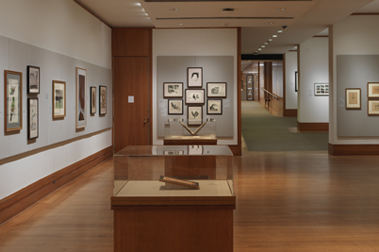Industrial Landscape
Not on view
Frédéric Juncker’s landscapes explore the subtleties of atmospheric conditions on a minute scale. In this industrial scene, swirling strokes, daubing, and scraping in the sky suggest smoke mixing with cloud through which the moon—conveyed by the unmarked white of the paper —shines through, illuminating the smokestacks and building below. In 1880, Juncker invented his own drawing method, which he called "dessin à la stéarine," and patented a specialized paper for the purpose. After coating the paper in wax, he created his composition with a mixture of wax, turpentine, and lampblack using a brush and various implements for wiping and scraping. The small-scale of his works is likely due to the quick drying nature of the wax medium. Juncker’s technique, unknown to art historians until now, exemplifies the experimental practices of artists working with black graphic media in late nineteenth-century France.
This image cannot be enlarged, viewed at full screen, or downloaded.

